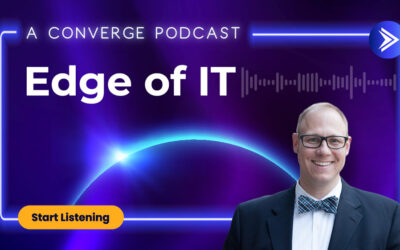Five Obstacles, every Healthcare Organization will face, and their Solutions
The Retrieval Augmented Generation (RAG) framework has gained immense popularity for building generative AI search and retrieval systems without baring the cost and effort of re-training or fine-tuning large language models (LLMs). This framework proves effective for many low-risk, back-office operational tasks in healthcare. However, it falls short in more complex production scenarios, especially in healthcare front-office applications.
In this article, I will discuss the five critical challenges that any healthcare organization will face when implementing RAG use-cases for customer-facing roles, provide practical examples, and explore potential solutions to these challenges.
Challenge No. 1: Addressing LLM Hallucination Risks
The term ‘LLM hallucination’ is becoming increasingly relevant and troubling for many healthcare organizations exploring generative AI for customer-facing use cases. Incorrect responses to inquiries in healthcare could have severe repercussions, including significant liability, deterring many from adopting this technology for front-office applications.
Understanding that LLM hallucination primarily arises from the model’s inherent tendency to generate responses even when it lacks sufficient context is crucial. Therefore, unless the retrieval step of a RAG system provides all the relevant datasets needed for the LLM (generation step) to produce an answer, hallucination is inevitable. Additionally, the ability to efficiently “connect the dots” across varied datasets with different modalities (structured and unstructured) is essential for deriving effective answers with minimal hallucination.
Consider a typical query within a health plan about the out-of-pocket cost for physical therapy sessions. Accurately responding to such a query requires synthesizing at least three key pieces of data:
- Benefit Information (likely unstructured) – To discern specifics such as copay, coinsurance, coverage limits, and distinctions between in-network and out-of-network services.
- Member Eligibility (likely unstructured) – To verify whether a member is enrolled and eligible for the benefits, including any prerequisites like prior authorization or referral requirements.
- Claim Accumulator (likely structured) – To determine how much of the deductible and out-of-pocket maximum the member has already met.
Without a mechanism to provide sufficient context from these interconnected data points, a RAG system is prone to generate misleading answers.
A promising solution to this critical issue is the implementation of a Graph RAG. Graph RAG is an enhancement technique to the Retrieval step in the RAG framework based on knowledge graphs. It uses a knowledge graph to maintain the relationship between entities and data chunks, ensuing that all the relevant data is fed into the LLM during the generation phase, thereby accurately addressing complex inquiries.
Challenge No.2: Handling Data Versions
In dynamic business environments, data is not static. Different versions of the same document or dataset can exist simultaneously. Answering questions with precision often requires navigating these versions effectively, a task that traditional RAG frameworks are not designed to optimize.
Consider a health plan where coverage and eligibility information are updated annually during the open enrollment period. If a member poses a question about their benefits, the system must not only access the relevant plan documents but also discern whether the inquiry pertains to the current or a previous iteration of the plan. This is not a trivial task and often requires the RAG system to flag questions that may require clarification before answering.
A viable strategy to address this challenge involves applying version tagging during the data embedding stage, coupled with the implementation of clarification protocols for retrieved data linked to version-sensitive documents. By tagging each version of a document or dataset within the knowledge base (vector database) with metadata detailing the version date and its applicability, the system can more accurately manage version control. Furthermore, it can activate a clarification protocol, prompting users to verify the relevant period or specific details before generating a response. This ensures that the information provided is both accurate and relevant to the user’s specific circumstances.
Challenge No.3: Handling Data Relevancy
In addition to needing an approach to efficiently managing multiple document versions, it’s also equally important to design RAG systems with the capability to access certain datasets in a real-time fashion. Traditional RAG frameworks often rely on batch updates to the vector database at varying intervals (hourly, daily, weekly, etc.). However, certain inquiries, particularly those that are time-sensitive, necessitate a strategy for providing real-time data feeds to prevent inaccuracies and hallucinations.
Consider the earlier scenario where a member inquires about the out-of-pocket cost for physical therapy sessions. To provide an accurate answer, it is crucial to understand recent claims submissions, adjudications, and any recent payments made. Relying on outdated batch updates could result in incorrect information, leading to member frustration and potential compliance issues.
One promising solution is augmenting RAG systems with an event streaming platform like Kafka. In this setup, updates to critical datasets trigger immediate updates to the vector database. This approach is particularly useful for handling time-sensitive data such as claim status updates, payment postings, or policy changes, ensuring that the information provided is always current and accurate.
Challenge No.4: Handling Sensitive Information (PHI, PII)
It’s imperative to say, that the management of sensitive information such as PII (Personally Identifiable Information) and PHI (Protected Health Information) when implementing RAG for customer-facing application is critical to comply with HIPAA regulations. Traditional approaches, which primarily utilize straightforward masking techniques, has proven to be deficient in this domain as they may strip away crucial context necessary for accurate response generation by the LLMs.
For instance, to accurately diagnose and suggest treatments, an LLM system requires an understanding of the relationships between a patient’s symptoms (PHI), personal demographics (PII), and family history (PII). These interconnected data points provide essential context that must be preserved when interacting with the LLM to accurately diagnose and recommend treatments.
A potential solution to enhance privacy while retaining this critical context is the implementation of an advanced token-based anonymization techniques with reversible transformation. This method involves substituting direct identifiers with fictitious yet plausible alternatives. These alternatives can later be re-associated with the original data, but only through a secure tokenization system that ensures data re-identification occurs under strictly controlled conditions.
Challenge No.5: Handling Data Access
While preventing the leakage of sensitive information to LLMs is paramount, it is equally critical to ensure that data access is restricted to authorized personnel based on their roles and entitlements—a principle known as data access control. Traditional RAG frameworks often lack the necessary granularity to enforce these controls effectively.
Consider a contact center for health plans, where agents are assigned to handle inquiries from members and providers specific to certain accounts or clients. For example, Agent A may be responsible for Account X, while Agent B handles Account Y. The RAG system must recognize and enforce these distinctions to ensure that information pertaining to Account Y is not inadvertently accessed or shared with Agent A.
A potential solution involves incorporating access control metadata during the data embedding process. This metadata can specify the access level required for each document or dataset. When a search query is performed, the system uses this metadata to restrict access and ensure that only authorized personnel can retrieve relevant information. This approach not only secures sensitive data but also aligns with organizational policies and regulatory requirements.
Implementing RAG frameworks in healthcare involves significant challenges, such as integrating diverse data, managing multiple document versions, handling sensitive information, and enforcing data access controls. Advanced techniques like Graph RAG, version tagging, token-based anonymization, and granular access control can address these issues, enhancing accuracy, compliance, and data security. Adopting these methods is crucial for fully leveraging generative AI in healthcare while maintaining high standards of data integrity and privacy.
By embracing these innovative solutions, healthcare organizations can unlock the full potential of generative AI, improving operational efficiency and patient care. If you’re ready to take the next step in transforming your healthcare operations with advanced AI solutions, contact us today to learn more about how we can help you implement these cutting-edge techniques effectively.
By Hanna Aljaliss, VP Of AI at Converge Technology Solution




